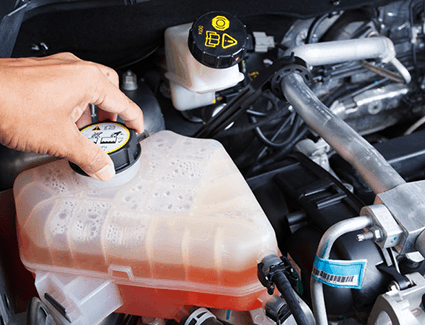Power steering fluid is an essential component of your vehicle’s power steering system. It helps lubricate the system and ensures smooth and effortless steering. Over time, the fluid can become dirty and contaminated, which can lead to issues with the power steering system. In this blog post, we will be discussing how to refill your power steering fluid, the importance of doing so, and some precautions you should take when performing this task.
Purpose of Power Steering Fluid:
The power steering system in your vehicle uses a pump to assist you when turning the steering wheel. This pump requires a specific type of fluid, power steering fluid, to function properly. The fluid acts as a lubricant and coolant for the system and helps to prevent wear and tear on the components. It is important to keep the fluid levels in your power steering system at the correct level to ensure smooth and effortless steering.
Benefits of Refilling Power Steering Fluid:
Refilling your power steering fluid on a regular basis can help prolong the life of your power steering system. It can also help improve the overall performance of your vehicle. When the fluid is dirty or contaminated, it can cause the system to work harder and make steering more difficult. By keeping the fluid clean and at the correct level, you can help prevent issues with the power steering system and ensure that your vehicle is running at its best.
Step-by-Step Guide:
- Locate the power steering fluid reservoir: The power steering fluid reservoir is typically located near the front of the engine, on the side of the firewall. It is often a clear plastic container with a screw-on or snap-on cap.
- Check the fluid level: Before you begin, it is important to check the fluid level in the reservoir. The fluid should be at or near the “full” mark on the side of the container. If the fluid level is low, you will need to add more.
- Locate the correct type of fluid: Check your vehicle’s owner manual for the recommended type of power steering fluid for your vehicle. Different vehicles require different types of fluid, so it is important to use the correct one.
- Drain the old fluid: If the fluid in your power steering system is dirty or contaminated, it is best to drain it out before adding new fluid. This can be done by locating the drain plug on the bottom of the reservoir and removing it. Be prepared for the old fluid to come out.
- Refill the reservoir with new fluid: Once the old fluid has been drained, add the new fluid to the reservoir. Be sure to use the correct type of fluid and fill the reservoir to the “full” mark.
- Start the engine and turn the steering wheel: After refilling the reservoir with new fluid, start the engine and turn the steering wheel to the left and right a few times. This will help circulate the new fluid throughout the system.
- Check the fluid level again: After running the engine and turning the steering wheel, check the fluid level again. It should still be at or near the “full” mark. If it is not, add more fluid as needed.
Precautions:
- Always be sure to use the correct type of power steering fluid for your vehicle. Using the wrong type of fluid can cause damage to the system.
- Be careful when handling the old fluid. Power steering fluid can be harmful if it comes in contact with your skin or eyes.
- Always wear gloves and safety glasses when working on your vehicle.
- Be sure to properly dispose of the old fluid. Do not pour it down the drain or on the ground.
In conclusion
Refilling your power steering fluid is an important task that can help prolong the life of your power steering system and improve the overall performance of your vehicle. By following the steps outlined in this guide, you can easily refill your power steering fluid at home, saving you time and money. Remember to always use the correct type of fluid, be careful when handling the old fluid, and take proper precautions when working on your vehicle.
It’s always a good idea to check your vehicle’s owner manual for any specific instructions or recommendations regarding your power steering system. If you’re unsure about how to refill your power steering fluid or if you notice any issues with your power steering system, it’s best to consult a professional mechanic. They will be able to help you diagnose any problems and ensure that your vehicle is running at its best.
In summary, power steering fluid is an essential component of your vehicle’s power steering system. It helps lubricate the system and ensures smooth and effortless steering. Over time, the fluid can become dirty and contaminated, which can lead to issues with the power steering system. Regularly refilling the power steering fluid can help prolong the life of your power steering system and improve the overall performance of your vehicle. Always use the correct type of fluid, be careful when handling the old fluid, and take proper precautions when working on your vehicle. If you’re unsure about how to refill your power steering fluid or if you notice any issues with your power steering system, it’s best to consult a professional mechanic.






